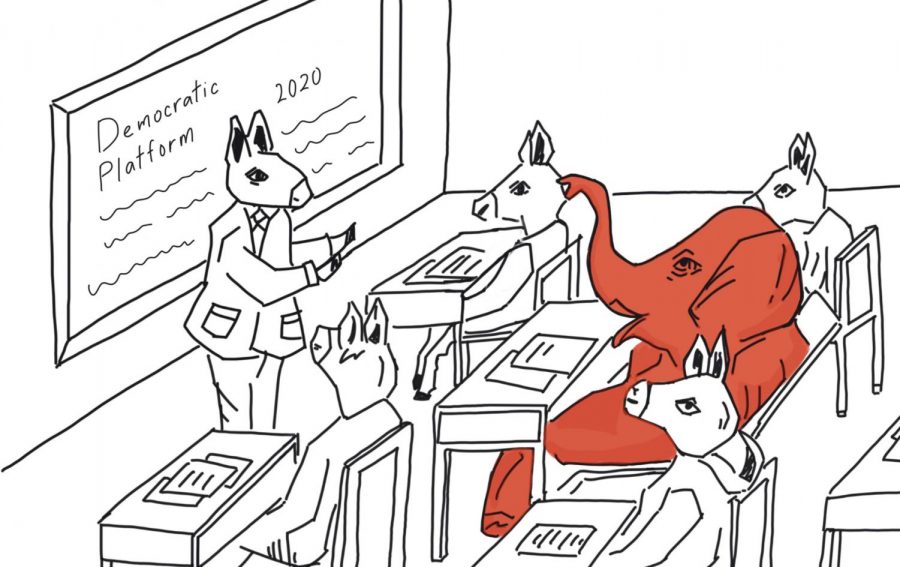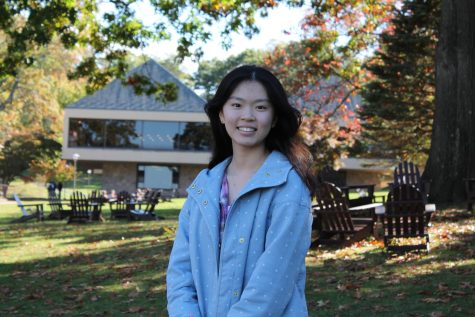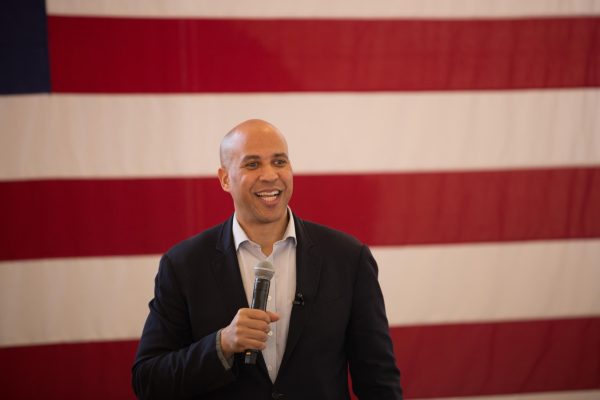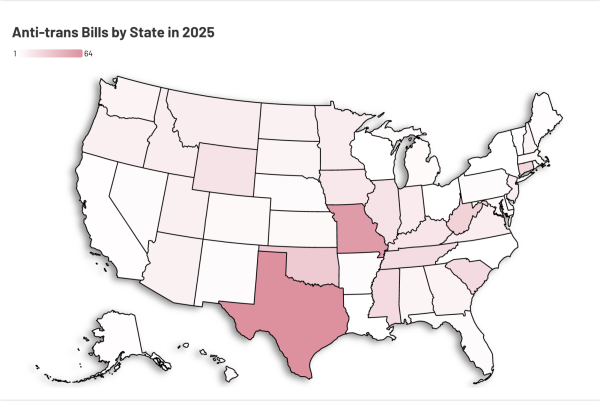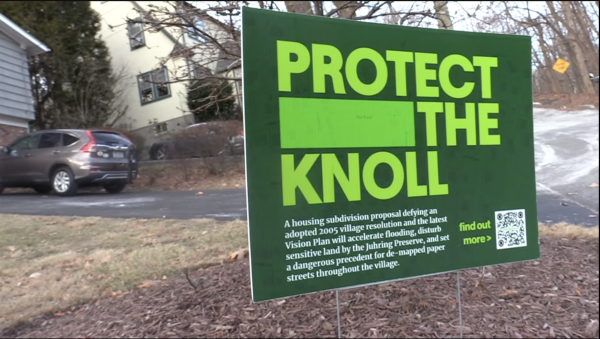The Elephant in the Room: In the classroom, truth trumps politics
The classroom illustration shows the donkey as the teacher and the students as donkeys, except for one student who is an elephant. The donkeys represent democrats and the elephant is representative of republicans, and appears larger than the other students, following the idea of the elephant in the room.
Before President Donald J. Trump was elected in 2016, many political science teachers concealed their personal political biases, intent on maintaining a non-partisan environment in the classroom. However, in just one term, Trump’s presidency has profoundly transformed the way that political science is being taught throughout the U.S. and beyond.
The unconventional presidency that is the Trump administration has provided political scientists, educators and students with a bone of contention: Is it okay for educators to show their political bias? Is it okay if teaching from moral ground involves tipping one’s hand toward a political party?
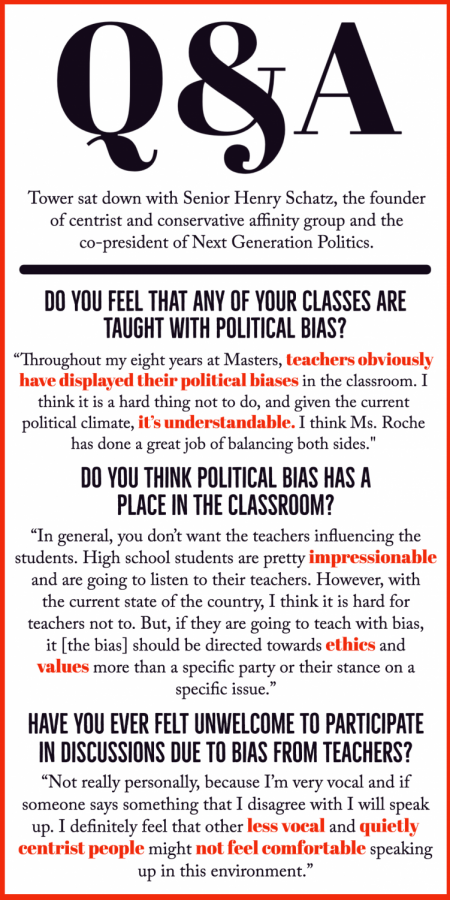 As a student of political science, the answer is clear to me. Yes; it is okay to indicate preference towards a political party if the moral imperative to speak the truth requires that of an educator. It is no longer possible to teach a class that discusses both sides of the political spectrum in an objective and authentic manner. The influence of politics has expanded beyond the shaping of people’s attitudes into alterations of people’s perceptions of the truth. The politics of Trump have surpassed partisanship.
As a student of political science, the answer is clear to me. Yes; it is okay to indicate preference towards a political party if the moral imperative to speak the truth requires that of an educator. It is no longer possible to teach a class that discusses both sides of the political spectrum in an objective and authentic manner. The influence of politics has expanded beyond the shaping of people’s attitudes into alterations of people’s perceptions of the truth. The politics of Trump have surpassed partisanship.
We are living in an increasingly polarized world; our nation is divided into two distinct ideological halves, separated by policies and differences of belief. Our 45th president does not fit into the commonly-accepted boundaries of American politicians; much of what he says is morally reprehensible, or just inaccurate.
In just 1,316 days, the president has made over 22,200 false and misleading statements, according to the Washington Post Fact Checker. His most common claim, being repeated 407 times, is, “Within three short years, we built the strongest economy in the history of the world.” The Fact Checker states that this is incorrect, as the economy under Presidents Dwight D. Eisenhower, Lyndon B. Johnson and Bill Clinton did better than it has under Trump.
Regardless of party, no one can deny that our nation’s leader spreads dangerous and false information almost daily, particularly in relation to coronavirus information and voting-by-mail. Trump’s remarks and tweets have repeatedly crossed over line, away from ethical standards and factuality.
Upper school political science teacher Colleen Roche echoed this sentiment.
“Whether it is insulting people from other countries, imposing anti-Muslim travel bans, mocking handicapped reporters or boasting about assaulting women, there are just so many aspects to his [Trump’s] character that I find problematic.” Roche continued, “I feel that as an educator, it is really doing a disservice to my students if I overlook that behavior.”
Teachers cannot be expected to maintain non-partisan rhetoric when faced with a president who has refused to denounce white supremacy. During the first presidential debate, Trump responded to moderator Chris Wallace’s request to condemn white supremacy with the statement, “Proud Boys, stand back and stand by,” referring to a far-right, neo-fascist and male-only organization that encourages violence, according to the Southern Poverty Law Center.
While it has been made difficult to do so, teachers should attempt to separate discussions on liberal and conservative policy with Trump’s personal behavior. However, there are certain policy positions that can’t be tolerated at a school with a mission like Masters. If a policy supports racist, homophobic, sexist and anti-Muslim stances, teachers cannot balance objectivity in teaching while remaining true to their values, especially considering the school’s emphasis on diversity, equity and inclusion.
The criticism of Trump in my political science class is made easier by the majority of left-leaning students on the roster, and the relative scarcity of his supporters. I also recognize that if my teacher was a Trump supporter, I would not want him or her to incorporate political opinions or biases into conversations. However, if he or she were a Trump supporter and followed the same prescription of operating from the moral imperative of discussing the truth, I think the classroom would still create a positive environment for dialogue.
Teachers have an obligation to create an academic atmosphere that stimulates and challenges students of both conservative and liberal backgrounds, forcing them to evaluate their viewpoints. They should attempt to create a classroom environment that reflects the moral and ethical values for which they stand, and provides students with the resources to create their own informed political opinions.

Senior Sophie Grand, currently Tower’s chief design editor, is in her second year on staff, previously serving as an opinion editor.
Grand plays...




